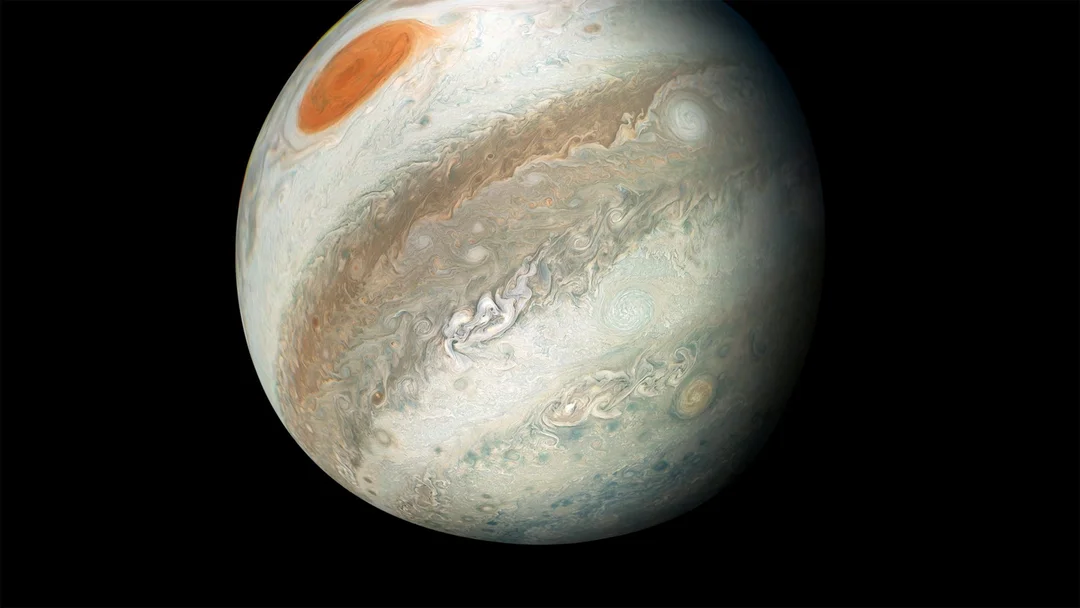
Jupiter’s Shocking Secret: The Gas Giant Was Once Twice Its Size!
Prepare to have your mind blown! New research reveals that Jupiter, the behemoth of our solar system, wasn't always the size we know. In fact, at the dawn of the solar system, it was a staggering twice as large as it is today! This revelation, detailed in a recent Nature Astronomy study, is sending ripples through the scientific community and offering a profound glimpse into the early days of our planetary neighborhood.
But how did scientists uncover this cosmic secret? Researchers from Caltech and the University of Michigan meticulously studied the orbits of two of Jupiter's small, irregularly shaped moons, Amalthea and Thebe. These moons act as time capsules, their orbits preserving clues about Jupiter's past. By analyzing the subtle discrepancies in their paths, scientists were able to reverse-engineer Jupiter's size and magnetic field in its infancy.

The results are astounding. According to the study, Jupiter's radius was once two to two-and-a-half times its current size – large enough to engulf over 2,000 Earths! Furthermore, its magnetic field was a colossal 50 times stronger than it is now. Imagine the sheer power and presence of a Jupiter like that!
"It's astonishing that even after 4.5 billion years, enough clues remain to let us reconstruct Jupiter's physical state at the dawn of its existence," said Fred Adams, an astrophysicist at the University of Michigan. This discovery provides a crucial "benchmark," as planetary scientist Konstantin Batygin of Caltech puts it, allowing scientists to more confidently trace the evolution of our entire solar system.
So, what happened to the colossal Jupiter? The answer lies in a process called the Kelvin-Helmholtz mechanism. As Jupiter slowly cools, its internal pressure drops, causing the planet to gradually shrink. In fact, Jupiter is still shrinking today, albeit at a rate of about 2 centimeters per year.
This groundbreaking research not only sheds light on Jupiter's past but also deepens our understanding of planetary formation. It supports the “core accretion” model, suggesting that gas giants like Jupiter form as rocky and icy cores rapidly accumulate gas.
Where does this knowledge lead us? "Our ultimate goal is to understand where we come from, and pinning down the early phases of planet formation is essential to solving the puzzle," said Batygin. By unraveling Jupiter's secrets, we are one step closer to understanding our own cosmic origins.
What do you think about this incredible discovery? Does it change your perception of Jupiter? Share your thoughts and theories in the comments below!